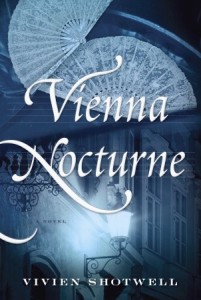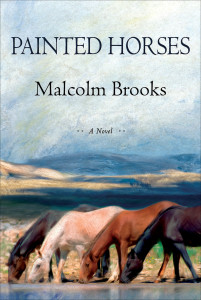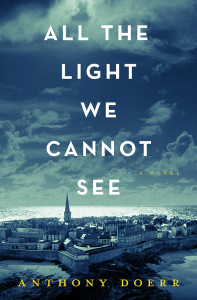 When Opera was the Rage – Musical passions and an imagined love between an opera diva and Mozart (18th century European opera houses in London, Naples, Venice, Milan, Vienna): When an acclaimed flutist and novelist (Eugenia Zuckerman) touts a musical novel about a legendary opera soprano (Anna Storace) who inspired Mozart, written by a mezzo-soprano with an opera degree (Vivien Shotwell) who sang an aria Mozart composed for Storace, you can’t help but take notice. When that novel, “composed” over a ten-year period, is warm and light like a piece of pleasing music – an accompaniment to the “warmth” and “light” Mozart is imagined telling Storace she brings when she graces a room – you’re doubly pleased.
When Opera was the Rage – Musical passions and an imagined love between an opera diva and Mozart (18th century European opera houses in London, Naples, Venice, Milan, Vienna): When an acclaimed flutist and novelist (Eugenia Zuckerman) touts a musical novel about a legendary opera soprano (Anna Storace) who inspired Mozart, written by a mezzo-soprano with an opera degree (Vivien Shotwell) who sang an aria Mozart composed for Storace, you can’t help but take notice. When that novel, “composed” over a ten-year period, is warm and light like a piece of pleasing music – an accompaniment to the “warmth” and “light” Mozart is imagined telling Storace she brings when she graces a room – you’re doubly pleased.
You need not be an opera fan to hear this novel’s music. The prose gracefully sweeps you along through the highs and lows of Storace’s narrative. You may, though, like me be unfamiliar with the language of the opera (messa di voce, motet, cadenza, ritornello, fioratura, recitative, libretto, roulades, ornaments, rondo, singspiel). That’s perfectly alright because the author’s style is intentionally accessible. Shotwell does not want to overwhelm us. She wants us – like all the passionate musical characters in this novel (drawn from real people except for Lidia, Storace’s loving maid, and other servants) – to consider that there may be “no higher art than music and no purer musical form than song.” Even the alluring dusk jacket (sorry e-readers!) embracing the trim 287 pages and short chapters feel designed to please. All part of the artfulness.
The gem of inspiration for the fictionalized story comes from an aria that Mozart composed for Anna in 1787, a duet in which he plays solo piano. An Italian translation includes: “Don’t fear, greatly beloved; for you, always, my heart will remain.” The opera was Mozart’s farewell gift to Storace when she left Vienna to return home to London to be with her fiercely protective brother, Stephen, a violinist; the author offers up a more intriguing reason. By now, Storace’s adulation is regal, leaving in a “four-horse carriage lined with furs and velvet.” She’s 21, the same age Shotwell was when she began to write the novel.
It opens in London, 1776 and traces the meteoric rise of a child prodigy to prima donna over ten years. Eleven-year-old Anna has a voice like a “pearl.” She wants everyone to love her and they do. Her first lesson is with the castrato, Venanzio Rauzzini, who “cherished her” instantly. Without a family, she added meaning to his life, and so he devotes himself to her unconditionally like a loving father. Two years later, Storace is performing at the Royal Opera House “where two thousand hearts lived with hers.” Two more years, age 15, she’s ready to leave London for Naples because “all anyone wanted now were Italian divas.” At 16, she heads to the Pergola Theatre in Venice performing comic opera with Ludovico Marchesi. He does her an enormous favor overshadowing her for she is not to be undone, and on stage, naturally, on-the-spot, she outshines him because she’s also clever and witty. Fired for overstepping her role but she’s now a sensation, she heads to La Scala in Milan, where she meets and befriends an Irish tenor, Michael Kelly. In Milan and then Venice, they are performing “opera buffa,” popularized because it can be enjoyed by everyone as opposed to serious opera (opera seria.) The opera company includes Mandini, Benucci, Saliera, and Francesco Bussani. Storace and Bussani play lovers on stage, which gets Storace into deep emotional territory with him off-stage. Fortunately, she can flee from him with the rest of the company to Vienna, because that’s where a music-loving emperor, Joseph II, who believes music is “the soul of humanity,” is forming his new opera company.
Just as Vienna is thought to have been the musical soul of Europe in the 18th century, Vienna is the soul of this novel. For here is where Anna meets 27-year-old Mozart. He falls in love with her beautiful voice – “listening to her he remembered everything he aspired for in his music” – and she falls in love with Mozart’s music. But were they lovers? Was it only in their music that they found an “intimate meeting place for themselves alone”? Or, were they more intimately involved?
As we reflect on these questions, the author presents evidence. Mozart repeatedly needs to remind himself that he loves his wife, Constanze (and now he’s a father of a son, Karl), but the truth is he had fallen in love with her prettier, opera-singing sister, Aloysia Lange, jealous of Storace. We’re also told that Mozart “learned early and well to disguise his feelings with revelry.” And, it is during this time that Mozart composed The Marriage of Figaro for Storace, perhaps his most beloved opera.
Shotwell delights us with descriptions of Mozart’s brilliance, intensity, playfulness, discipline, creative risk-taking, and complicated compositions. “The walls might have collapsed in flames around them and he would have kept murmuring and analyzing.”
Together, Storace and Mozart win the hearts of everyone. Because of Shotwell’s creativity, we can see why.
An Epilogue dated 1801 and an appreciated Historical Note fill in the missing pieces, satisfying us the way you feel when you’ve bought a ticket to a performance and are so glad that you showed up. Lorraine



